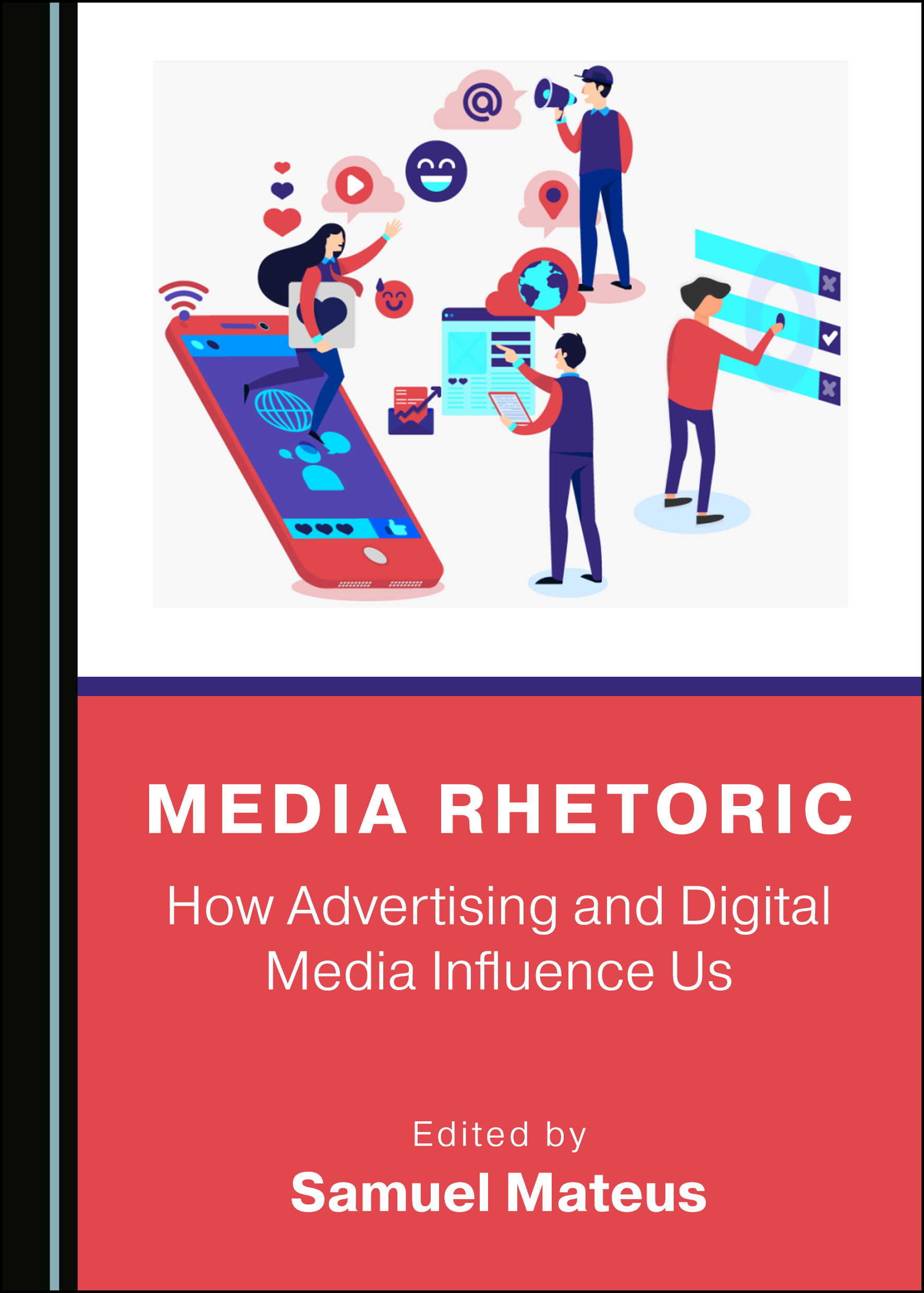Articles of interest
23rd June 2021
Book in Focus
Media Rhetoric
How Advertising and Digital Media Influence Us

Edited by Samuel Mateus
Media Rhetoric: How Advertising and Digital Media Influence Us is all about the development rhetoric experienced with the emergence of modern, digital media encompassing advertising, persuasion in videogames, design in videogames, soundbites and visual rhetoric.
What happens when homo rhetoricus meets the media?
The result is an enlargement of the field of rhetoric. This expansion of the field is not new, and several authors have already noted that it is divided into several domains such as stylistics, composition, poetics and literary rhetoric. In fact, rhetoric is not just classical oratory and composition, nor is it a form of language criticism or a linguistic device, nor even simply a topos in philosophy in its quest for truth and certainty. In addition, rhetoric is not just argumentative activity within a democratic perspective. Despite all these different domains contributing to the richness of the rhetoric corpus, the shattering of rhetoric in the 20th and 21st centuries is well beyond these approaches.
The six chapters comprising this volume make original contributions to the study of media rhetoric, especially in the domains of advertising and digital rhetoric. Together, they provide us with theoretical and empirical perspectives authored by scholars in the fields of communication, design, rhetoric, advertising and new media. The authors focus on the specificity of rhetorical activity and pay attention to the characteristics and constraints imposed by mediated rhetoric and rhetorical media. They present the state of the art of media rhetoric analysis in such diverse genres as printed and television advertisements, political communication and videogames.
For example, in Advertising as a Rhetorical Metagenre, Ivone Ferreira presents us with not one but two bold statements: not only can advertising be considered as a rhetorical genre, but it is also a special kind of genre: a metagenre. Inspired by Nietzsche’s essay Rhetoric and Language, in which he acknowledged the existence of 30 rhetorical genres in the Classical Period, and drawing on Bakhtin’s genre theory, Ferreira concludes that advertising rhetoric can be seen as an autonomous genre.
In the second chapter, Artwork as Representation in Advertising: A visual Rhetorical Perspective, Fatma Köksal and Ümit Inatçi continue the debate around the power of visual rhetoric already alluded to in the first chapter. Although acknowledging that rhetoric deals primarily with oral discourse, it emphasizes “the transformation of the oral to the written word and ultimately to visual communication too”. This second chapter argues that rhetoric can be applied to any field of human activity. Indeed, since the 20th and 21st centuries have emphasized an ever-growing dependency on visual discourse, visual rhetoric is a field that is undergoing a crucial expansion.
Iconic Rhetoric in the Discourse of Advertising, written by Carmen Neamtu, closes the first part of the book. In this chapter, the author describes the importance of the image and its relation to the word. In fact, as it points out, “few readers of a newspaper or magazine go through the entire text of an advertisement”. As a result, this chapter details a series of characteristics of the construction of advertisements, preparing a visual path of reading and a special visual construction.
In Rhetoric in Video Games: What Makes Games Persuasive? Tauel Harper and Jordana Elliott offer a compelling argument about the persuasiveness of videogames. Re-appreciating classical teachings on rhetoric, they apply them to videogames from a tripartite perspective of logos, ethos and pathos.
In Chapter Five, Eric Walsh presents A Rhetorical Framework for Impact Design in Games. The chapter starts by stressing the value of the impact of videogames: “Game designers should thus have a vested interest in better understanding how impact operates so that they can more effectively implement it in their own work. Designing for impact with the player’s needs in mind isn’t just more likely to ensure that the game’s effects are positive, but also that the player cares deeply about the experience presented by the game and becomes more invested as a result”.
Finally, in Chapter Six, entitled Brevity, Emotion and Frugality in Political Media Rhetoric: The Use of Soundbites in Portuguese Political Discourse, Francisca Gonçalves Amorim addresses the problem of media rhetoric through the lens of the persuasive dimension of soundbites. Defined as “a short sentence or expression taken from a political speech and repeated in the media”, Amorim describes soundbites as key political messages that involve short and clear arguments intended to be put into circulation by mass media. A soundbite is a rhetorical technique implemented by two different types of discourse-producing subjects—journalists and politicians—while adapting to media and gaining attention thanks to its emotional and concise nature.
Media rhetoric has matured markedly in the few decades since it was introduced. Having established itself as a valid approach to understanding how media affect rhetoric and rhetoric affects media, I think the time is right to deepen and extend its contribution.
I hope the reader finds a wealth of insights in this book and takes up the invitation to pursue these ideas further.
Samuel Mateus, PhD, teaches Rhetoric and Communication at Madeira University, Portugal, and is the author of Introduction to Rhetoric in the 21st Century (2018). His research focuses on media rhetoric and, particularly, advertising rhetoric. His publications include “Welcome to Media Rhetoric: Where Human Persuasion and Technological Means Collide” (2021); “In medias res – the mediation conundrum” (2020); “Affective Rhetoric: What Is It, and Why It Matters” in Affect, Emotion, and Rhetorical Persuasion in Mass Communication (2018); and “Psychagogia and the Rhetoric of Desire and Affect” in Rhetoric and Communications E-Journal (2018). He is also the co-editor of From Multitude to Crowds: Collective Action and the Media (2015).

Media Rhetoric: How Advertising and Digital Media Influence Us is available now at a 25% discount. Enter the code PROMO25 at the checkout to redeem.










